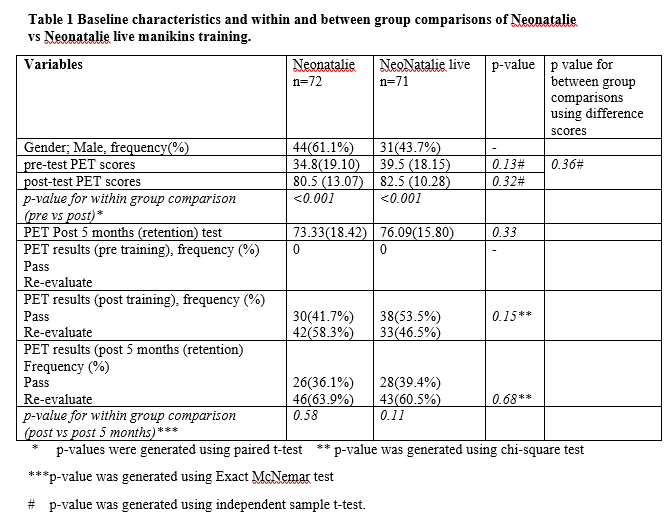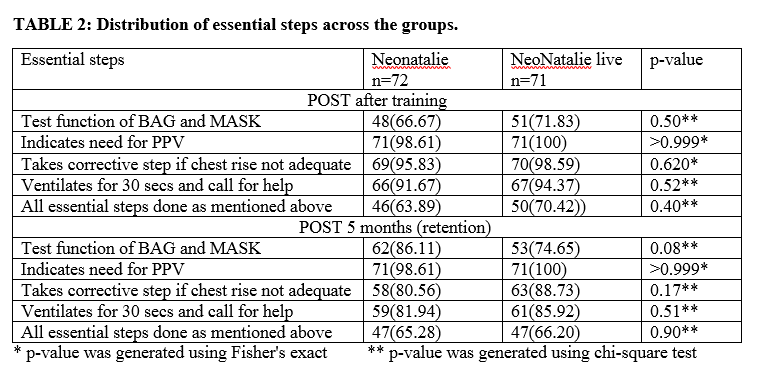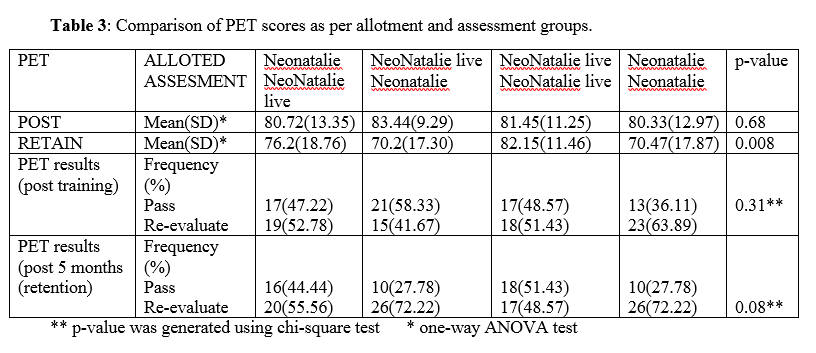Neonatal/Infant Resuscitation
Neonatal/Infant Resuscitation 1
307 - NeoNatalie vs. NeoNatalie Live simulation for training undergraduate students in neonatal resuscitation.
Publication Number: 307.347

Somashekhar M. Nimbalkar, MD
Professor of Neonatology
Bhaikaka University
Karamsad, Gujarat, India
Presenting Author(s)
Background: Prompt and effective neonatal resuscitation is an essential measure for reducing mortality due to neonatal asphyxia. A new manikin Neonatalie Live has been developed with more fidelity, but whether it improves the transfer of skills is unknow.
Objective: Noninferiority RCT to evaluate the skill acquisition between two manikins and to assess retention post 6 months
Design/Methods:
An RCT was done where undergraduate students were randomized into Neonatalie or NeoNatalie live groups over four days. Following training half the students in each group were evaluated on a different manikin than the one they were trained on. A post-retention test was done after 5 months.
Results:
A total of 143 undergraduate medical students were included and randomly allocated to N (n = 72) or a NL (n = 71) group. Mean (SD) pre-test PET scores for N and NL groups were similar across groups [34.8(19.10) vs. 39.5 (18.15); p=0.13)]. PET score was comparable between two groups after training [80.52 (13.07) vs. 82.46 (10.28), p=0.32]. Both groups showed significant improvement in posttest PET score(P< 0.001). There was no significant difference noted across the groups in retention post 6 months. The distribution of students who passed the exam after training was similar between groups N and NL. 30(41.7%) vs 38 (53.5); p=0.15)]. Similar result was noted across the groups in retention post 5 months (Table 1) Distribution of essential steps in both the groups were similar. (Table 2)
The one-way ANOVA test revealed no difference in POST PET scores among the groups N NL, NL N, NL NL, and N N (the first one is assigned and the second one is evaluated) [80.7 (13.3) vs. 83.4 (9.2), vs. 81.4 (11.2) vs. 80.3 (12.9); p=0.68). There was a statistically significant difference in PET score after 5 months (retention) between groups as determined by one-way ANOVA (p< 0.001) (Table 3). The Scheffe post hoc test revealed that the PET score in the group in which participants were assigned and evaluated in Neonatalielive was statistically significantly higher than the PET score in the group in which participants were assigned and evaluated in Neonatalie group (82.15 ± 3.3 11.46 vs 70.47 ± 17.87, p = 0.037) and assigned to Neonatalielive and evaluated to Neonatalie group (82.15 ± 3.3 11.46 vs 70.2 ± 17.30, p = .031). But there was no significant difference in terms of PASS and Reevaluate across the four groups (Table 3)
Conclusion(s):
There is a modest improvement in scores trained and evaluated on Neonatalie Live, which suggest that realistic assessment with higher fidelity has a better outcome.


